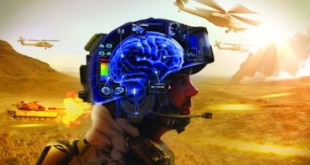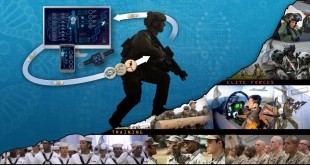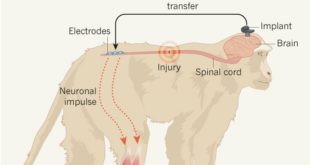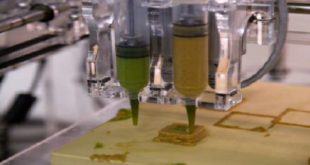The brain-computer interface (BCI) allows people to use their thoughts to control not only themselves, but the world around them. BCI enables a bidirectional communication between a brain and an external device, bidirectional generally includes direct neural readout and feedback and direct neural write-in. Over the past two decades, …
Read More »COVID-19 Outbreak raises the threat of next pandemic, Synthetic Biologists race to develop detection, vaccination to cure technologies
Since December 31, 2019, when the 2019-nCoV coronavirus was first reported from Wuhan, China, It has spread like wildfire to every corner of the globe, posing a serious threat for the foreseeable future. Millions have been infected, although a worse tragedy has been avoided thanks to widespread adoption of social …
Read More »Biomarkers playing vital role from gauging Warfighter Readiness to predicting infection
The term “biomarker”, a portmanteau of “biological marker”, refers to a broad subcategory of medical signs – that is, objective indications of medical state observed from outside the patient – which can be measured accurately and reproducibly. Medical signs stand in contrast to medical symptoms, which are limited to those …
Read More »DARPA MBA develops set of Biomarkers predicting Warfighter Readiness and performance in military missions
The Defense Advanced Research Projects Agency launched a program helping the Department of Defense sustain and reinforce U.S. military readiness through the study of warfighter biology. The Measuring Biological Aptitude program seeks to understand biological processes and factors that could affect the performance of specialized military roles, according to DARPA. Service …
Read More »DARPA’s BG+ is mitigating spinal cord injury of wounded warfighter, promoting healing in the battlefield
In November of 2016 Nature reported that the results of experiments in Beijing, in which a wireless brain implant — that stimulates electrodes in the leg by recreating signals recorded from the brain — has enabled monkeys with spinal-cord injuries to walk. “They have demonstrated that the animals can regain …
Read More »DARPA’s INI developing AI algorithms of BCIs that allow troops to control unmanned systems using their brains.
Recent progress in central and peripheral neural interface technology has resulted in impressive capability demonstrations. These include the use of neural signals to control the reanimation of paralyzed muscles or to control high-dimensional prosthetic limbs, external robots, and even flight simulators. In many of these examples, sensory feedback from the …
Read More »New Materials enhance Artificial Photosynthesis to produce Clean Air, and Renewable Energy using more efficient and cheaper methods
Energy is the fuel for growth and life. Despite centuries of over-reliance on fossil-based energy sources with devastating effects on the planet, more environmentally friendly and renewable options keep emerging as suitable alternatives. Hydrogen generation by water splitting has long attracted attention due to its zero-emission advantage. Each water …
Read More »DARPA BETR plans a bioelectronic interface for Intelligent Healing for Soldier’s wounds through dynamic, adaptive, and precise human therapies
Nowhere is prompt and effective medical treatment more important than on the battlefield, where injuries are severe and conditions dangerous. Soldiers are vulnerable to many injuries on the battlefield, the most common combat wounds include: Blast wounds caused by landmines, grenades, IEDs (improvised explosive devices), and suicide bombings where the …
Read More »Artificial Photosynthesis breakthroughs promise a new renewable energy source to tackle climate crisis
Since ages the natural photosynthesis has sustained human civilization by providing food, fuel and the life sustaining environment, which is now threatened by the twin challenges of energy security and global warming. Researchers all over the world have turned to artificial photosynthesis for future sustainable life on this planet. Artificial …
Read More »New food technologies to enhance soldier perfomance for success in military operations.
With nutritional status being central to success in battle, food technology has long been considered an enabler for military operations. Food technology has been instrumental in ensuring that troops remain “fit to fight”. Early military leaders realised that how well their men were fed played a crucial role in success …
Read More » International Defense Security & Technology Your trusted Source for News, Research and Analysis
International Defense Security & Technology Your trusted Source for News, Research and Analysis









